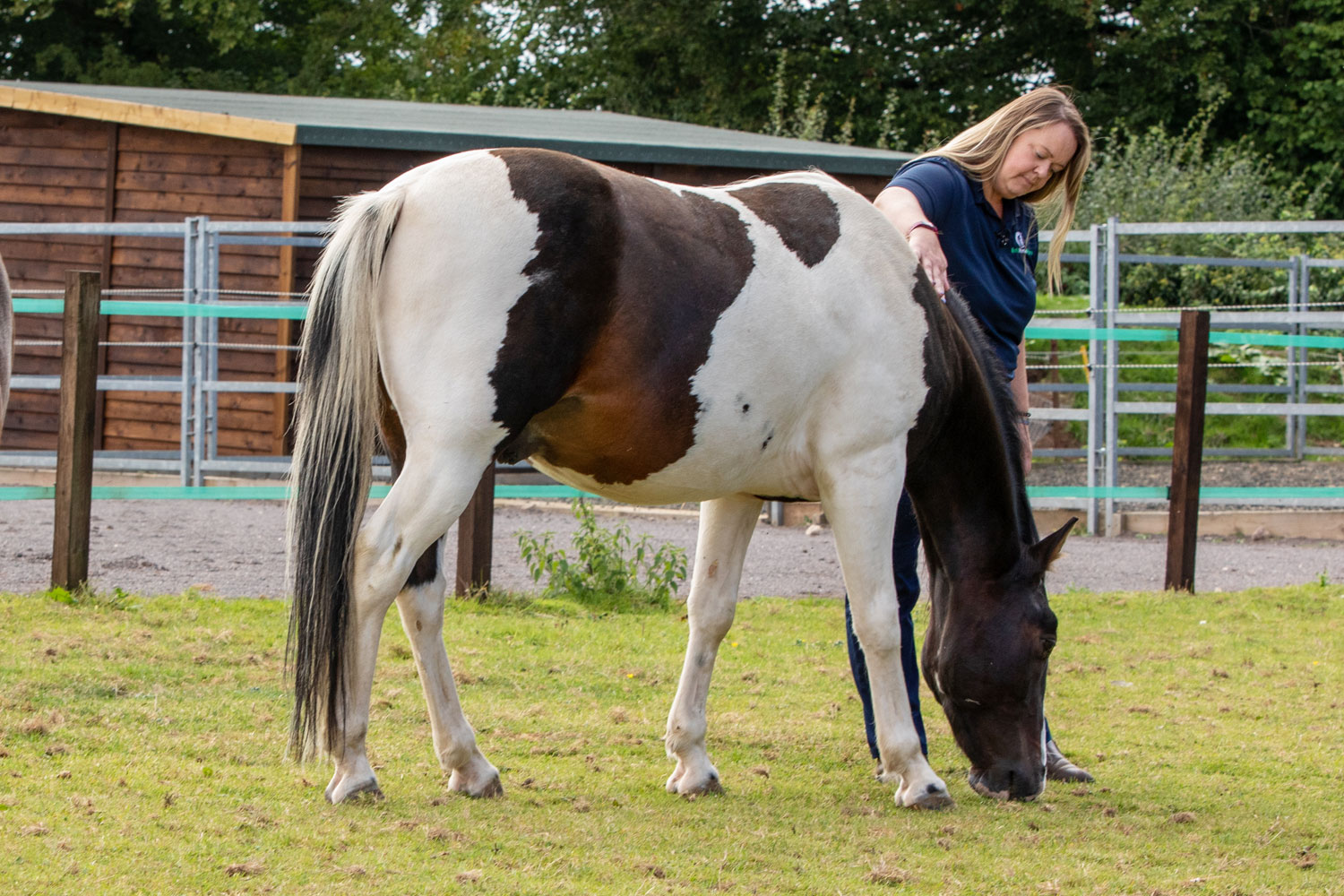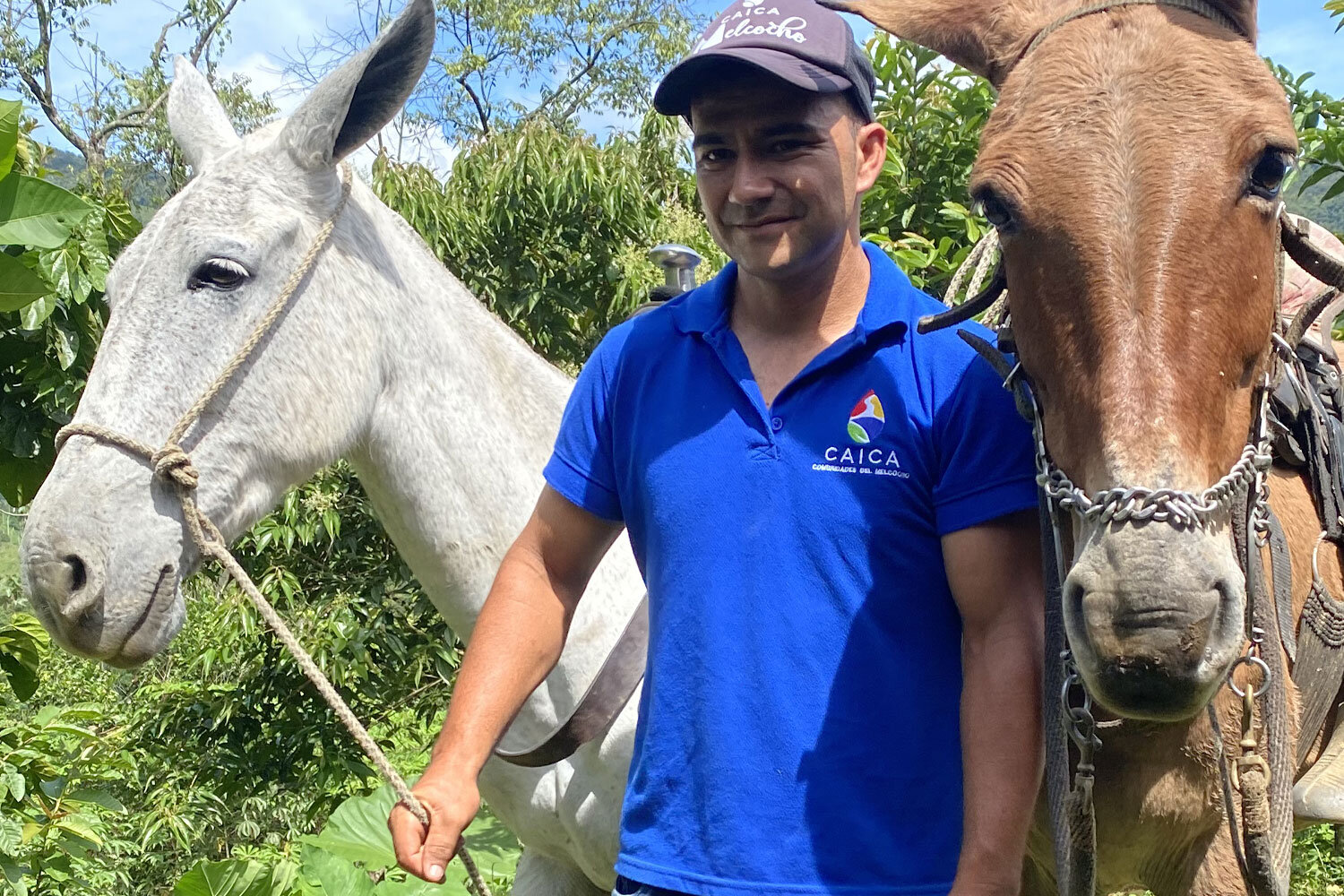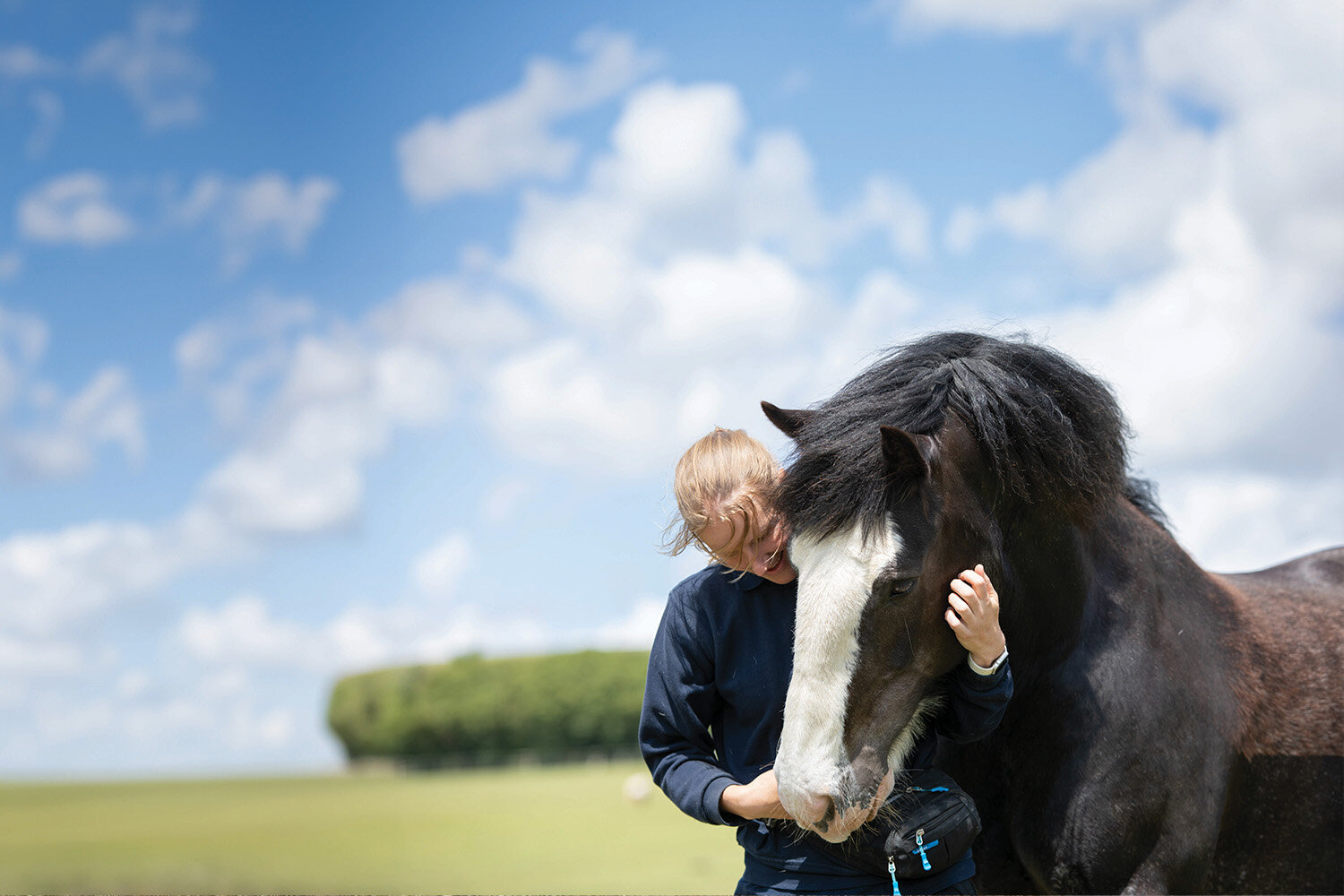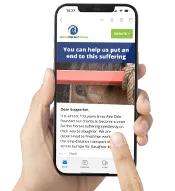End of life: a decision most horse owners dread, but how do you prepare for it?
Field Officer Penny Baker shares her thoughts on how horse owners can prepare for the decision nobody wants to have to make.
Posted on 21/02/2023

I think it’s really important for horse owners to acknowledge how tough this decision can be and how much grief can be involved. Our horses mean the world to us, so it’s natural and totally OK to find this hugely difficult to deal with. One thing that’s really useful to know is how many organisations there are out there who can help you – and that alone shows how important our pets are to us. From our Just in Case materials to the BHS ‘Friends at the End’ and the Blue Cross Pet Bereavement Support Service, help is available, so don’t be afraid to ask for it. The Equine End of Life Service website can point you to all these as well as lots of other useful resources.
For many owners, it can be helpful to discuss the situation with someone who doesn’t have an emotional attachment to your horse – our Advice Line team regularly get calls like this. Often, even if we know deep down that the time is right to make that decision, we feel a need to talk it through with someone else to be certain in our own mind that we really are doing the right thing. Sometimes the situation is clear-cut, such as the horse having suffered a catastrophic injury or untreatable colic, for example, and it’s very obvious to both vet and owner that the only humane thing to do is put the horse to sleep. In other cases, such as elderly horses or a horse who has a chronic ailment, I find that often owners expect or want their vet to almost make the decision for them, but in truth that’s not the vet’s responsibility, and of course they don’t see the horse every day. Tough as it is, in situations like this the onus is on us as the owner to make that decision for our horse – not least as we know them best and so are most able to tell if their habits and/or demeanour have changed (which can be an indicator that their quality of life is decreasing). Three useful things to remember:
- Euthanasia can absolutely be a positive welfare decision – especially if your horse is elderly or suffering from an injury or disease or has a behavioural issue which means that realistically their quality of life is already compromised or only going to deteriorate.
- It is very true that a week too soon is far better than a day too late. Horses don’t have a sense of time, so the idea of ‘giving them one last summer’ is very much for the owner’s benefit, not the horse’s. Horses don’t know what the future holds – they only live in the here and now, so it’s far better to let them go before their quality of life deteriorates.
- Your horse doesn’t know what’s coming on the day they’re euthanased – they learn by experience and have no previous experience of being put to sleep, so please don’t think that they know what’s happening next and make yourself feel guilty over it.
If this is a planned euthanasia (i.e., not an emergency) and one of a pair of horses is to be put to sleep, it can be helpful to get a new companion beforehand. This will help your remaining horse cope, and that will hopefully make it slightly easier for you too. It’s quite common for horses to be quiet and/or very dejected in the days after a herd member is put to sleep, whether they’ve seen the body or not. Equally, don’t be upset if they don’t appear concerned – it doesn’t mean their connection with their companion was any less. It’s an entirely personal decision as to whether you show the remaining horse(s) their friend’s body, but it is often very helpful as that way they know exactly what’s happened instead of waiting for their pal to come back. If you have two elderly or unwell horses who are deeply attached to each other, it’s worth considering whether it would be in their best interests to be put to sleep on the same day. Tough as that would undoubtedly be on you, on reflection you may realise that it may well be the kindest outcome for them.
In my job, I quite often see cases of delayed euthanasia of older horses. This is usually absolutely not neglect, but the owner simply not realising how much their beloved horse has deteriorated. Usually, I find that these horses are extremely well looked after; they’re not deteriorating because the owner doesn’t care but because they’re really struggling to see the change and/or make that final decision. We all see our horses every day so it’s completely natural to not pick up on gradual changes, but over time this can really add up.
One thing to bear in mind is that the fact a horse is still eating doesn’t necessarily mean they have a good quality of life. Horses are incredibly stoic and the instinct to eat is very strong, so don’t rely on your horse still eating as the main sign that all is well. Likewise, if your horse is suffering with a chronic or recurring ailment, such as arthritis, Cushing’s, or laminitis, you might need to consider whether keeping them going on medication indefinitely is truly the right solution for them. Sometimes, just because you can treat or medicate something doesn’t mean you should, or that it’s really the right plan for your horse in the long term.
People often ask, ‘How do I know when it’s the right time to make this decision?’. My answer is: flip the question around and ask yourself, ‘How prepared am I to watch my horse deteriorate? What am I not comfortable to do, in terms of letting their quality of life diminish?’. Thinking about it that way around can be hugely helpful. If it’s an older horse, taking the time to watch them lie down and get up again can provide a good insight into how comfortable and mobile they truly are. If you discover that they’re no longer able to lie down at all, that’s a real indication that their quality of life isn’t what it ought to be – although bear in mind that you may need to be creative in how you find this out, such as installing wireless cameras overlooking your horse’s living area. This is particularly relevant as horses need to get some period of sleep during every 24-hour period when they are lying flat out, but many will choose to do this in the small hours of the morning, making assessing whether they are still doing this – and how easy they find it – all the more challenging. On a personal level, I was really proud that I was able to make the decision to let my 28yo Thoroughbred (who’d struggled with recurring illness) go whilst he still looked in as good condition as he did when he was 12. I said to myself that if the problem came back again the next winter, it would be time – and, tough as it was, I’m proud that I kept my word to him and let him go before his quality of life deteriorated.
Photos and videos can be a very useful way to monitor your horse and help you make a more objective, informed decision. I often find that if we sit down and have a chat, owners can flick back to older photos, from a few months or even a year ago, and then be really shocked when they look up at the horse in front of them now to realise how much they’ve changed. If this does happen to you, please don’t feel guilty – it truly is hard to see it happening in front of your eyes when you see your horse every day. Frequently, the owner will get back in touch a week or so later and say that they’ve made the decision to have their horse put to sleep and that our conversation really helped. You could consider being proactive with this, by taking photographs at regular intervals and referring back to them routinely, as this can be an invaluable way of identifying changes before they are too advanced.
It’s important to do your research and/or speak to your vet well in advance of any potential end of life decisions, so you know what the options are and what to expect. You can find helpful, factual descriptions in our ‘Just in case – the facts’ leaflet, which is available on our ‘Equine end of life’ page. Whichever method of euthanasia is selected, some owners will decide to hold their horse for the process whilst others don’t want/feel able to. This is a hugely personal choice, and you should not feel guilty if you choose not to hold them – they don’t know what’s about to happen, and you would only be letting them down if you allowed your worries about this to delay the decision. I’ve seen equine end of life many, many times and I couldn’t hold my daughter’s pony when the time came. You could get a trusted friend to help or ask whoever is performing the euthanasia if they can bring someone with them to hold your horse.
Another very personal decision is how you choose to describe the situation to any children who may be involved. In our case, I felt it was far better to be truthful with my daughter about what was going to happen with her pony and explain gently that he was going to be put to sleep, rather than saying he was being sent away somewhere else as some people suggested I tell her. This gave her a chance to say goodbye properly and, whilst she was obviously very upset, she wasn’t left wondering what had happened to him or why he wasn’t coming back. The loss of an animal, whether a pony or another pet, is often a child’s first experience of bereavement and how this is handled can really influence how they cope with future losses.
My take-home messages would be to a) remember that euthanasia can be a valid and positive welfare option and b) make your plan in advance and ensure that anyone caring for your horse in your absence is aware of it – you never know when an emergency might happen. If you use our Just in Case materials (available here), you can give a copy of your plan to your yard owner, vet, or anyone looking after your horse for you. And if you need advice or just to talk to someone impartial about making an end-of-life decision for your horse, please remember that you can call our Advice Line in office hours on 01953 497238 and we’ll be more than happy to help you.
If you do suddenly end up with one horse left on their own and not coping, we can help you find your horse a new friend as soon as possible. Please call our Advice Line on +44 (0)1953 497238 if you find yourself in this situation.
Topics
Related Blog Posts

Plan for an emergency when you’re not around – help us to help your horse
Deputy Chief Field Officer Jon Phipps has top tips for owners on making plans just in case your horse injures themselves when you’re not there.

How to help a needle-shy horse overcome their fear
Grooms Amy and Emily explain how they work with horses who are nervous with needles before a visit from the vet.
Recommended News Articles

The cost of a coffee can improve the lives of the horses – and the people – who transport it
Do you know about the close links between your cup of coffee and the working horses and their owners in Colombia?

Statement on BBC Panorama programme – The Dark Side of Horse Racing
Joint statement from BHS, Blue Cross, Bransby Horses, Horse World, Redwings, RSPCA and World Horse Welfare.

Struggling horse owners are urged to rehome this summer
We have joined forces with Blue Cross to help avoid a winter welfare crisis.
Enjoy reading stories like this?
Join over 65,000 other horse lovers and sign up for our email newsletter

Join over 65,000 other horse lovers and sign up for our email newsletter
Sign me up now